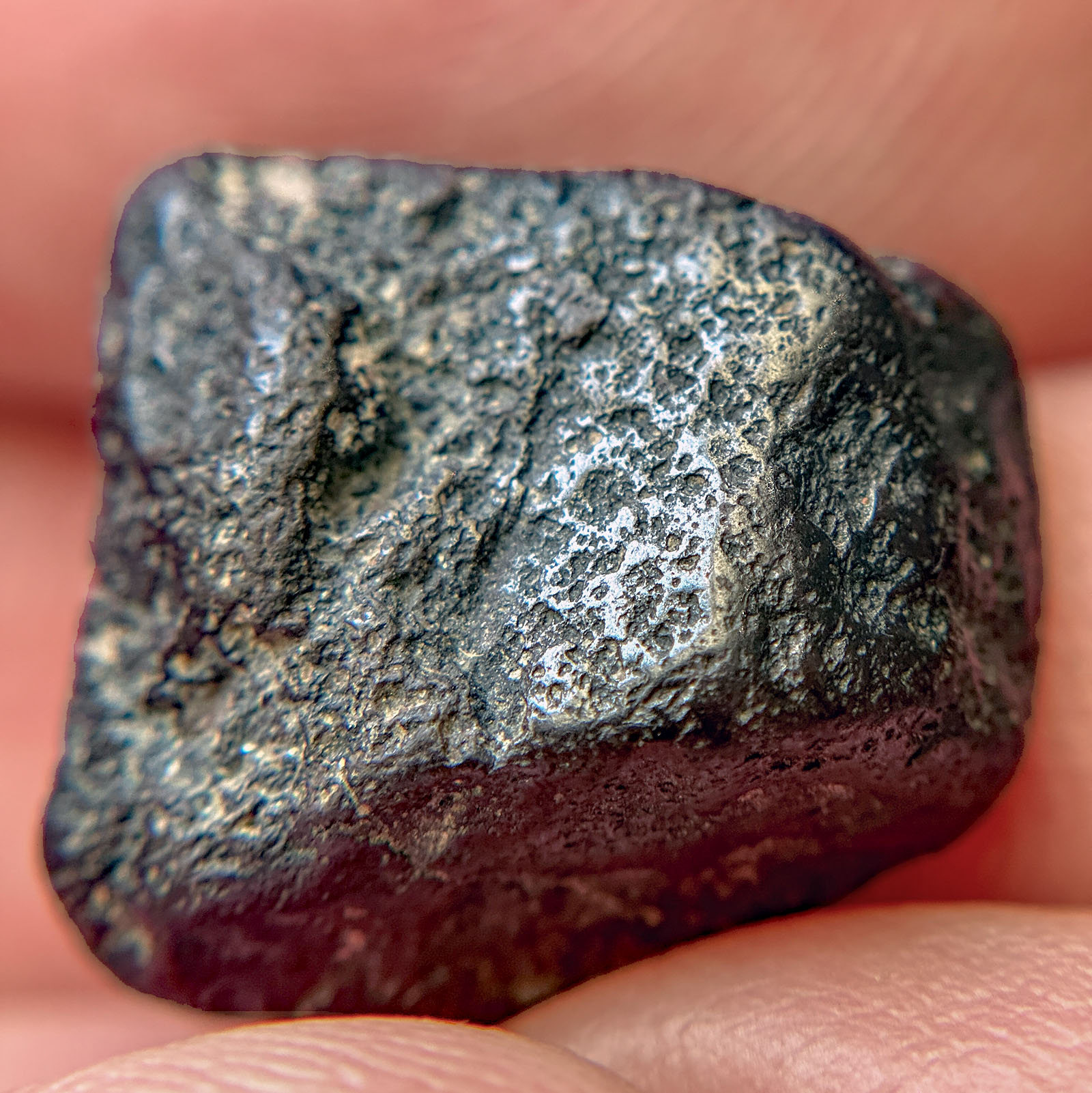|
Roll Overs:
#1
#2
#3
#4
#5
#6
#7
#8
|

|
|
Copyright (c) See Contributor Info.
|
16.7 carats (3.35 grams). 17 x 16 x 10mm. Impactite (maybe)
Found in Found in Bahia, Brazil.
Scott writes:
Carbonado diamonds were discovered in Brazil in the 1840’s and the name comes from Portuguese for "burnt" or "carbonized". They are also called "black diamonds". Instead of the crystalline structure found in typical diamonds, carbonados are polycrystalline aggregates of amorphous carbon, graphite and diamond. They are harder/tougher than typical diamonds due to the cross-facing crystalline structures, and so are prized for industrial drilling and abrasives.
So why does a diamond deserve mention on MPOD? It turns out that they are quite different than conventional terrestrial diamonds, and evidence increasingly suggests these are extra-terrestrial, likely from a meteorite strike over a billion years ago. Carbonado diamonds are only found in very specific regions, primarily the Bahia Province in Brazil and the Ubangui region of the Central African Republic, which might seem far apart, but these locations were adjacent 1.1 billion years ago as part of the Congo-São Francisco craton (see pic 7).
The lead isotope age of carbonados corresponds to the Late Heavy Bombardment, and one theory of their origin is that they were produced by collisions involving Neptune and Uranus (A. Brunini, 1995, 2006). Unlike typical diamonds, carbonados are found in alluvial sedimentary deposits and not in igneous kimberlite. The Carbon and Nitrogen isotope ratios in carbonados are completely distinct from typical diamonds (see pic 8). They also differ from typical diamonds in that they lack the trace minerals that are characteristic of the earth’s mantle, and contain osbornite (TiN), which is only found in meteorites. Another origin theory is that carbonados were formed in supernovae, ejecting chunks of diamond-containing material that eventually landed on earth (Jozsef Garai and Stephen Haggerty).
If you’d like to learn more, I highly recommend David Weir’s excellent write-up on Carbonado Diamonds here
Research is ongoing and there isn’t a definitive answer yet on whether these are meteoric, but the evidence looks strong to me and so my carbonado is kept with its meteorite friends!
Pics 1-6 copyright Scott McGregor and may be freely used with attribution.
Pics 7-8 are copyright Stephen E. Haggerty, Earth-Science Reviews, vol. 130, pp. 49–72
Click to view larger photos #1 #2 #3 #4 #5 #6 #7 #8
|
| |
Mike Murray
12/13/2022 10:34:54 PM |
Amazing how much that stone in the pictures looks like magnetite. |
John Mixter
12/13/2022 12:39:48 PM |
Wonderful photographs with a very informative write-up. An extraterrestrial origin for carbonados has always been *one of the possibilities* to explain their origin. However, since Dr. Haggerty*s publication around 2015, more researchers / scientists have moved this possibility to the top of the other explanations. Granted, more research is needed, but everything to date is pointing in this direction. |
Kevin S Maloney
12/12/2022 2:59:12 AM |
Very interesting. Thank you. |
| |
|